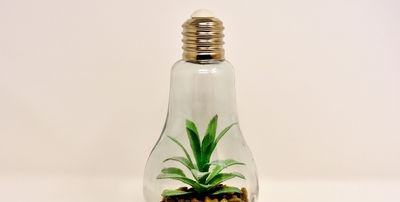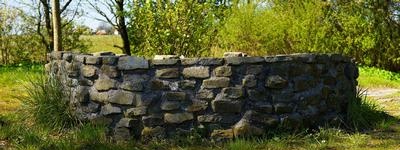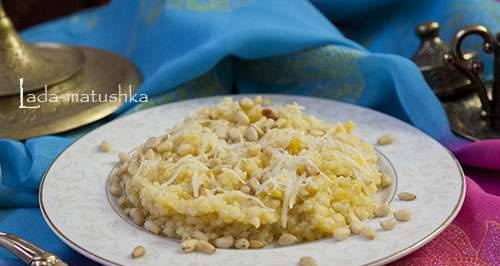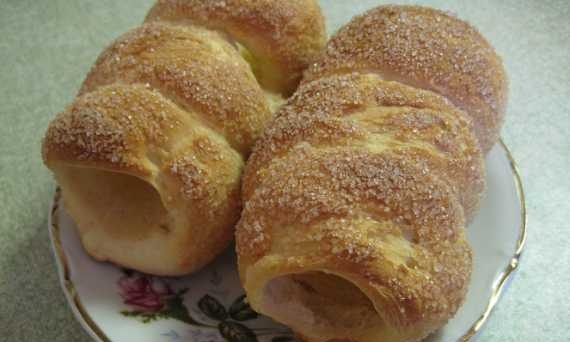|
 As you know, the seeds of many plants, when in favorable conditions, germinate quickly. The first and most important condition for their germination is moisture. In a dry state, seeds can be stored for a long time. As you know, the seeds of many plants, when in favorable conditions, germinate quickly. The first and most important condition for their germination is moisture. In a dry state, seeds can be stored for a long time.
During the restoration of the Nuremberg Theater in 1955, glass tubes with seeds of barley, oats and other crops from the 1831 harvest were found. These seeds were sown, sprouted and produced plants with awnless ears. Mimosa seeds sprouted after 147 years. But the longest period of preservation of the viability of seeds, recorded in the world literature, refers to lotus seeds, which can germinate after lying in the mud for 500-800 years.
When the seeds come into contact with water, it begins to flow into them with great force. For example, cocklebur seeds can absorb water even from a saturated sodium chloride solution having an osmotic pressure of 375 atmospheres. By absorbing water, the seeds swell and grow in size. Such swollen seeds exert enormous pressure on the environment. This can be judged by the incident that happened to the steamer "Dnepr".
This steamer crashed before entering the Bosphorus Strait. An emergency ship with K. Paustovsky came to his aid. In his story "Black Sea", he described what he saw: “When we approached Dnipro, we saw an unusual sight. The steamer was broken on the reefs. The bow was separated from the stern, and both parts of the steamer, removed from the stones by Epron's expedition, stood side by side, swaying at anchors. Impenetrable bulkheads prevented the water from sinking the broken steamer ... The sight of the ruptured steamer was unexpected for us, but soon everything became clear. The holds of the Dnieper were loaded to the brim with peas. Water penetrated the hole and soaked the peas. It swelled and tore with incredible force the iron sides of the steamer, bent bulkheads and tore out the frames ".
But water does not penetrate so easily into all seeds. The kernel of seeds of white acacia, walnut, gladichia and many other plants is chained in hard covers. Through these covers, access to the embryo of moisture and oxygen is difficult, and without them the seeds do not germinate. This situation is well illustrated by the results of such an experiment: 50 gladichia seeds were put into water at the same time, 4 of them swelled the next day, 11 - after two months, 17 - within a year, 6 - after a year, 6 - in the third year, 3 - on the fourth and fifth years, and 3 seeds did not swell or germinate, although they were in the water for more than five years.
Seed dormancy and its disturbance
Many such seeds are known, into which water penetrates easily, but they still do not germinate. Some seeds, for example, do not germinate if they are sown immediately after harvest. In order for such seeds to start growing, some period is needed. This period is called seed dormancy. I.V. Michurin pointed out that in every seed that is at rest, that is, in a dry form, the process of life does not stop, a constant, albeit slow, metabolism takes place, supporting the life of the embryonic cell, and the correct course of such an exchange is entirely depends on the environmental conditions in which the seed is located.
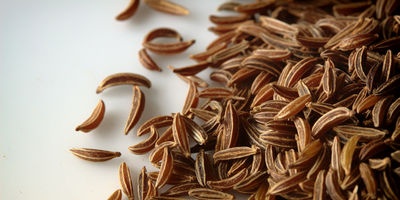 At first glance, seed dormancy is a negative phenomenon. In fact, their transition to a state of dormancy is a useful biological property that protects seeds from premature germination and death under the influence of unfavorable environmental conditions. At first glance, seed dormancy is a negative phenomenon. In fact, their transition to a state of dormancy is a useful biological property that protects seeds from premature germination and death under the influence of unfavorable environmental conditions.
If the seeds did not have a dormant period, then a person would experience extremely great difficulty in collecting, storing and sowing them.There are varieties of corn, the seeds of which lack a dormant period, and therefore they easily germinate on the green cob of the mother plant, forming large seedlings. This phenomenon is also observed in some varieties of wheat, rye and other crops. It is clear that such varieties are not widespread, since their seeds cannot be stored.
What explains the seed dormancy? The reasons for preventing seed germination are different. Some (walnut, almond and others), as noted above, this is due to the presence of hard seed covers that retard the flow of water to the embryo, in others (euonymus, ash, etc.) the embryo is covered with substances that retard its germination, and in others (linden, cocklebur, etc. .) the embryo is covered with a film that does not allow oxygen to pass through.
Some researchers associate the transition of seeds to a dormant state with the termination of the formation of vital compounds and the accumulation of substances in the tissues that delay the germination of the embryo. Indeed, such inhibitors are found in some seeds. For example, pine and rye seeds soaked in water extract from apricot seeds do not germinate at all. Sugar beet seed extract inhibits the germination of seeds of barley, peas, cockle and other plants.
It has been established that hydroxybenzoic, vanillic, hydroxycinnamic and ferulic acids are inhibitors in beet seeds.
In seeds with low germination in other plants, substances have also been found that inhibit germination. These include tyrosine and ammonia.
Excessive accumulation of vitamins in seeds can also delay seed germination. So, as stored in seeds saxaul, chogon and some others, the content of vitamin P increases several times. In favor of the fact that vitamin P, accumulating in significant quantities, inhibits seed germination, this fact also speaks. If the germinating seeds of these plants are wetted in a solution of vitamin P and thereby increase its content, the germination of such seeds is delayed. Compounds close to vitamin P were also found in the hull of wheat with red grain. These substances also delay the germination of freshly harvested kernels.
Some growth promoters, accumulating in high concentrations in seeds, can also delay seed germination. It was found that dormant seeds of euonymus, ash and maple contain such concentrations of indoleacetic acid (heteroauxin), which suppress seed germination.
Very rarely seeds germinate in fruits. In this regard, it was suggested that their pericarp contains substances that inhibit seed germination. To test the correctness of this assumption, such an experiment was set up. An aqueous extract was prepared from the pericarp and the seeds taken from the same fruits were soaked in it, some of the seeds were soaked in water. It turned out that in the first case, seed germination and seedling growth were inhibited. So, when mulberry seeds were soaked in the extract, 14% of the seeds germinated, and when kept in water, 73%.
Other experiments have found that the amount of inhibitors decreases as the fruit ripens.
The nature of germination inhibitors is still poorly understood. One thing is clear that the chemicals that inhibit their germination are not the same for different seeds. In this regard, the neutralization of substances that retard seed germination is carried out by different methods. In one case, the content of these substances in the seeds decreases during leaching, that is, when the seeds are soaked in water; in another, seed treatment with growth stimulants is necessary; in the third, they act on seeds by physical factors (light, temperature, etc.)
Inhibition of germination is associated not only with the presence of substances that inhibit this process, the state of the cells is also of significant importance. Professor P. A. Genkel explains the state of dormancy by the fact that complex compounds are formed in ripening seeds. They separate the protoplasm from the walls, which leads to disruption of communication between cells.A fatty layer appears on the surface of the protoplasm, which prevents the penetration of water and protects the cell contents from adverse environmental conditions.
Currently, techniques have been found to help the seeds get out of the dormant state.
When grinding seeds with sand, crushed glass or using special machines, access to the embryos of water and oxygen opens up and the seeds germinate.
 Many seeds require a different preparation - stratification. For this purpose, they are mixed with moist fine-grained sand in a ratio by volume: one part of seeds to three parts of sand. Many seeds require a different preparation - stratification. For this purpose, they are mixed with moist fine-grained sand in a ratio by volume: one part of seeds to three parts of sand.
River sand is usually used as a medium for stratification. During the entire stratification, the moisture content of the sand is maintained at 30-50% of its full moisture capacity. A layer of seeds with sand for pome breeds should be no higher than 25 cm, for stone fruits - no more than 40 cm.
Temperature conditions are essential for the stratification of seeds. The most favorable temperature for stratification is 0-1 °, when it drops to -6 ° the stratification process slows down, below -6 ° the germination of seeds decreases, and at temperatures below -15 ° the seeds die.
In addition to sand, moss is also used for stratification. The latter, due to its high moisture capacity, high aeration and antiseptic properties, is considered the best medium for stratification.
Depending on the nature of the seeds of fruit crops, the duration of stratification is different. For the seeds of the Sibirka apple tree, the stratification period is 25-30 days, for the seeds of Anis and Antonovka - 80-90, for seeds of cherry plum, prunes, Antipovka cherries - 120-150, and for ordinary cherry seeds - 150-180 days.
The germination of seeds is especially noticeably accelerated during stratification under the following conditions: fresh horse manure is laid on the bottom of the trench with a layer of 40 cm, a layer of sand 10 cm is poured on top, and then 8-10 cm of seeds mixed with sand in a ratio of 1: 3. The seeds are moistened daily heated water (35-45 °). With this preparation, the seeds apricot and walnuts sprout on the 12-15th day, dogwood - on the 40-45th day, etc.
The conditions under which seeds undergo stratification accelerate the physiological processes that prepare seeds for germination. The amount of substances that retard seed germination is reduced. Under the influence of low temperatures, vital compounds are formed that stimulate their germination.
The end of the process of seed stratification is usually determined by germination and by the appearance of a root in nashed seeds. However, these methods take a long time and are not always applicable to fruit crops in deep dormancy.
In recent years, new methods have appeared for determining the state of the dormant period of seeds and the degree of their readiness for sowing after stratification. Studying the nature of metabolism in seeds that are in a state of dormancy and emerged from it, it was possible to establish that the massive appearance of starch in the root and parts of the cotyledon near the bud, a decrease in fat, and the absence of isolation of protoplasm characterize the release of seeds of fruit crops from a state of dormancy. Such seeds can be used for sowing after two weeks.
Not only under the influence of stratification, but also under the action of variable temperatures on seeds, seed germination and plant development are noticeably accelerated. Thus, when exposed to cotton seeds, alternating low and high temperatures accelerated the emergence of seedlings, the onset of flowering, and the yield increased. Similar facts have been established for seeds of corn, cucumbers, tomatoes and other crops.
Studies have shown that under the action of low temperatures, g and b-berellin-like compounds are formed in seeds. But before dwelling in more detail on the important role of these substances in the life of plants, let us briefly talk about the history of their discovery.
In the rice fields of Japan, India, China and other countries, an unusual phenomenon has long been observed, when shoots of some plants began to grow vigorously. Fruiting of such rice plants was delayed, the seeds in the panicles sometimes did not form at all, and the yield dropped sharply.
Known as bad shoots, this disease has been found to be caused by the fungus gibberella fuykuroye. It has been suggested that the gibberella mushroom secretes an unknown substance that stimulates shoot growth. Later this substance - gibberellin - was isolated and its structure was determined.
Many other microorganisms, as well as higher plants, have the ability to synthesize this growth stimulant. Gibberellin-like substances are found in the seeds of peas, corn, beans, apple and other plants, in the leaves tobacco, rapeseed, perilla and rudbeckia, in the roots of peas and water hyacinth. At present, 9 gibberellins have been isolated, differing from each other in physical and chemical properties. Science has not yet known such a substance that can not only enhance the growth of plants, but also make plants not blooming under normal conditions to bloom. Gibberellins noticeably accelerate seed germination and improve seedling growth.
Removal of hard coverings from seeds with deep dormancy, in many cases, although it causes the growth of embryos, they give weak plants. The processing of the embryos of dormant seeds with gibberellin contributes to the elimination of dwarfism in fruit trees, in maple, in tree peony and others.
Seeds peachthat have a deep dormant period, even after removal of the bone, require 2-3 months of cold stratification. On the other hand, the treatment with gibberellin of seeds that were partially or completely not subjected to stratification causes a violation of the dormant period and stimulates their germination.
For germination, euonymus seeds require the action of variable temperature (2-3 months at 10-20 ° and 3-4 months at 0-6 °). Under the action of elevated temperature in the seeds, the embryo grows, which leads to cracking of the seed coat. This process of opening the seeds can be markedly accelerated by treating them with 0.05-0.1% gibberellin solution.
In the seeds of many plants, the growth of the embryo begins with the expansion of the cells. But this process is sometimes delayed, although cell division does occur. It is believed that the stimulating effect of gibberellin on seed germination consists in the fact that it enhances the process of stretching of the embryonic cells, which, apparently, plays a leading role during germination.
It seemed that since many seeds lack the green pigment, chlorophyll, light is not needed for seed germination. But experiments have shown that this is not the case. Along with many seeds that germinate in the dark, hundreds of species of seeds are known, for the germination of which light has a beneficial effect, and for some it is simply necessary. So, the seeds of mistletoe, fireweed, poisonous buttercup and other plants that are in the soil at such a depth where light does not penetrate, do not germinate. If these seeds hit the surface and are exposed to light, they begin to germinate quickly.
Recently, new data have been obtained on the effect of light on seed germination. It turned out that fourfold irradiation of pine seeds with red light increases their germination by 6 times. If, after this, the seeds are irradiated with infrared rays, then the positive effect of red light is removed. It is believed that red light enhances the formation of gibberellin, which activates seed germination. In the dark, the opposite process takes place, which is enhanced by the action of infrared rays. This and other facts prompted the study of the responsiveness of light-sensitive seeds to the action of gibberellin. It turned out that the seeds of lettuce, guayula, tobacco and other plants, being treated with this growth stimulant, did not need the action of light and therefore germinated well in the dark.
Other compounds are known to enhance seed germination.Academician N.G. Kholodny for the first time in our country conducted research on the effect of heteroauxin on seed germination and plant productivity. He showed that seed treatment with this growth promoter markedly increases yields. oats and wheat, Heteroauxin and other growth stimulants enhance the germination of tung seeds, cotton plant, oak and many other plants. This is also observed when treating seeds with succinic acid, vitamins and other compounds.
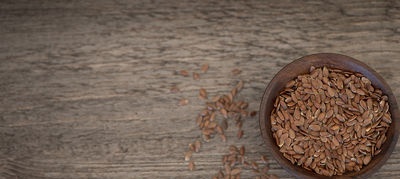 Presowing treatment of seeds with some substances has such a profound disturbance in metabolism that it leads to a change in the nature of plants. This was first convincingly shown in relation to the action of colchicine. This substance is obtained mainly from the plant Colchicum, which received the name from Kolkhos, that is, ancient Colchis, where it is especially common. The Russian name of the plant is autumn crocus. It blooms without leaves in late autumn, then hibernates, and in the spring, with the appearance of leaves, its capsules ripen. Colchicine isolated from this plant turned out to be a potent poisonous substance, although in small doses it has a therapeutic effect. Even the Byzantines used the extract from colchicine as a medicine against gout. Presowing treatment of seeds with some substances has such a profound disturbance in metabolism that it leads to a change in the nature of plants. This was first convincingly shown in relation to the action of colchicine. This substance is obtained mainly from the plant Colchicum, which received the name from Kolkhos, that is, ancient Colchis, where it is especially common. The Russian name of the plant is autumn crocus. It blooms without leaves in late autumn, then hibernates, and in the spring, with the appearance of leaves, its capsules ripen. Colchicine isolated from this plant turned out to be a potent poisonous substance, although in small doses it has a therapeutic effect. Even the Byzantines used the extract from colchicine as a medicine against gout.
It has recently been found that the treatment of seeds or plants with this substance causes a change in the hereditary characteristics of the plant organism. By selecting from these altered plants, it was possible to isolate forms of buckwheat, millet, barley, rye and other crops with increased productivity.
Profound changes are also observed when the seeds are treated with ethyleneimine. Soaking the seeds of a wheat-wheatgrass hybrid in a solution of this preparation (0.01-0.04%) during the day led to the appearance of new forms. Presowing treatment of wheat seeds with a high dose of 2,4-D (2,4-dichlorophenoxyacetic acid) also leads to significant changes in the hereditary characteristics of plants.
When treating seeds with various chemicals, one has to pay attention to changes in the hereditary nature of plants. Those substances that increase the yield, but worsen the variety, cannot be recommended for wide practical use. Compounds that, by enhancing growth, improve the nature of the plant, deserve special attention.
For example, pre-sowing treatment of wheat seeds with vitamin PP accelerates plant growth. The leaves of such plants become larger, the stem is thicker, the spike and the number of grains in it increase. Such plants also give a higher yield. By taking seeds from these plants and sowing them, it is possible to improve the nature of the variety.
Until recently, the main methods of seed treatment were soaking or dusting them with one or another substance. But such techniques were not always applicable in practice.
Soaking the seeds is a tedious task, especially when large quantities of seed are to be processed. Wet seeds, moreover, cannot be sown immediately, since they will pass unevenly through the seeding units of the seeder. Drying the seeds also requires labor. In addition, if the weather is unfavorable and sowing cannot be done, the wetted seeds may germinate.
When dusting, the substances applied to the seeds crumble. These circumstances prompted researchers to find so-called adhesives that would keep nutrients and pesticides on the surface of seeds. The development of polymers has opened up new, promising opportunities for seed coating. The factories began to cover the corn seeds with a thin layer of special films. These films are injected with pesticides, nutrients and growth stimulants, and sometimes harmless paints. The seeds are dyed mainly in order to easily distinguish the treated seeds from the untreated ones. The seeds prepared in this way can be used for sowing at any time.
Ovcharov, K. E. - Power of man over plant life
|
 As you know, the seeds of many plants, when in favorable conditions, germinate quickly. The first and most important condition for their germination is moisture. In a dry state, seeds can be stored for a long time.
As you know, the seeds of many plants, when in favorable conditions, germinate quickly. The first and most important condition for their germination is moisture. In a dry state, seeds can be stored for a long time. At first glance, seed dormancy is a negative phenomenon. In fact, their transition to a state of dormancy is a useful biological property that protects seeds from premature germination and death under the influence of unfavorable environmental conditions.
At first glance, seed dormancy is a negative phenomenon. In fact, their transition to a state of dormancy is a useful biological property that protects seeds from premature germination and death under the influence of unfavorable environmental conditions. Many seeds require a different preparation - stratification. For this purpose, they are mixed with moist fine-grained sand in a ratio by volume: one part of seeds to three parts of sand.
Many seeds require a different preparation - stratification. For this purpose, they are mixed with moist fine-grained sand in a ratio by volume: one part of seeds to three parts of sand. Presowing treatment of seeds with some substances has such a profound disturbance in metabolism that it leads to a change in the nature of plants. This was first convincingly shown in relation to the action of colchicine. This substance is obtained mainly from the plant Colchicum, which received the name from Kolkhos, that is, ancient Colchis, where it is especially common. The Russian name of the plant is autumn crocus. It blooms without leaves in late autumn, then hibernates, and in the spring, with the appearance of leaves, its capsules ripen. Colchicine isolated from this plant turned out to be a potent poisonous substance, although in small doses it has a therapeutic effect. Even the Byzantines used the extract from colchicine as a medicine against gout.
Presowing treatment of seeds with some substances has such a profound disturbance in metabolism that it leads to a change in the nature of plants. This was first convincingly shown in relation to the action of colchicine. This substance is obtained mainly from the plant Colchicum, which received the name from Kolkhos, that is, ancient Colchis, where it is especially common. The Russian name of the plant is autumn crocus. It blooms without leaves in late autumn, then hibernates, and in the spring, with the appearance of leaves, its capsules ripen. Colchicine isolated from this plant turned out to be a potent poisonous substance, although in small doses it has a therapeutic effect. Even the Byzantines used the extract from colchicine as a medicine against gout.